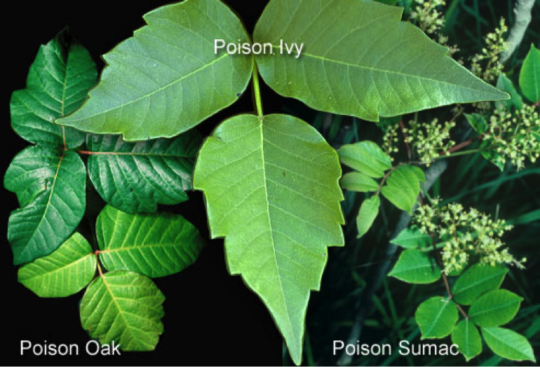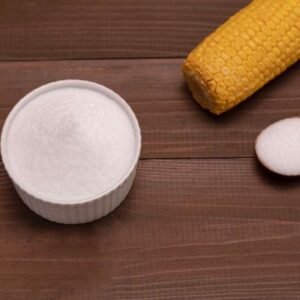
Easy Ways to Destroy This Yard Menace Without Harsh Chemicals
- Find out if this source of itchy and blistery pain is hiding in your yard today!
- Discover the one thing you should never do when disposing of this plant
- Call in the reinforcements! If you can find them. Learn more…
Dear Living Well Daily Reader,
“Leaves of three, let it be. Berries white, run in fright…”
If this saying rings a bell, then chances are you live somewhere with poison ivy.
And if you’ve ever experienced the nasty, itchy, blistery rash that comes from brushing up against one of these prolific vines and bushes, then you know they can cause serious pain
But they aren’t alone. Poison oak and poison sumac can also cause devastating pain and discomfort to your skin.
You see, all three of these plants contain a long-lasting oil called urushiol, which can cause a painful, itchy flare-up even after slight contact.
Unfortunately, you don’t have to be an avid hiker or camper to have a run-in with urushiol. Actually, you may not have to look any further than your own outdoor space to find these biting plants.
And while you definitely don’t want this ticking time bomb of discomfort planting roots in your yard, you probably don’t want to douse your lawn in harsh chemicals, either.
So what can you do?
Well, the good news is there’s a chemical-free solution to ridding your turf of these pesky plants. I will share this natural concoction in just a bit. First, let’s talk about gearing up for clearing them out of your yard.
![]() You’ll Need More Than a Pair of Gloves
You’ll Need More Than a Pair of Gloves
Pulling these plants might be the quickest way to clear them, since the results are immediate. Surprisingly, there are folks who are immune to the effects of urushiol. If you are lucky enough to know someone who has this immunity, ask them to help you remove the plants. If not, you need to make sure you have the proper gear.

Poison Ivy leaves may also have smooth edges. Be on the lookout for both.
Source: outdoororbivore.com
First things first, make sure you have a quality pair of gloves without any holes to cover your hands.
Next, you will want to make sure you have covered every part of your body that may come in contact with the plant. This might mean duct-taping your pants to your socks and your shirt sleeves to your gloves. Plus, you will need eye protection, a face mask, and something to cover your neck.
Once you’re fully suited, you can get to removing the plants.
For best results, after you’ve pulled the plant, dig in the soil (up to eight inches) to ensure there is no root left. When the plants and roots are removed, put some cardboard over the removal area to impede regrowth.
Place all plants in a heavy-duty trash bag and store in a safe place for garbage collection.
![]() Never burn these plants!
Never burn these plants!
Burning urushiol plants, even when they are dead, can produce smoke that is extremely irritating to the eyes, nasal passages, and lungs. In fact, it’s been thought that burning poison ivy could have been the inspiration for mustard gas.1
After you’re done pulling and bagging the plants, remove your clothes carefully and wash immediately. Urushiol can be active on surfaces for up to five years, so you may want to wash your clothes twice to be safe.2
![]() Spray Away!
Spray Away!
If pulling the plants doesn’t seem to do the trick or you just don’t want to risk contact, there are a couple other ways to tackle these backyard threats. One of these is with a homemade herbicide.
Here is what you will need:
- 1 pound of salt
- 1/2 gallon of water
- 2 cups of white vinegar
- 1/4 cup of biodegradable dish soap.
Combine all ingredients in a weed sprayer and stir until fully dissolved. Next, spray the offending vegetation until fully coated. This mixture will kill any plant it touches, so be sure you’re only dousing the plants you want destroyed.
Also, it’s best to apply the solution on sunny days so that rain doesn’t wash it away. It may take a few applications, but it will kill any unwanted plant guests.
And lastly, you can call in reinforcements of the animal kind…
Goats are completely immune to urushiol and make fast work of destroying these plants. Plus, it’s a treat for them!
If you don’t own a goat or know of one you can barrow, some areas have goat rental services. Check the web to see if there are is a rent-a-goat service near you!
Live well,

Natalie Moore
Managing editor, Living Well Daily
Sources
[2] POISONOUS PLANTS
[3] What is the best way to get rid of poison ivy?
Written By Natalie Moore
Natalie Moore is a dedicated health researcher with a passion for finding healthy, natural, and science-based solutions. After a decade of direct healthcare experience in western and natural medicine, she was involved in public health research before joining Living Well Daily.
View More Free Articles
This Sleep Mistake Is Doubling Your Disease Risk
Think your inconsistent bedtime is just a harmless habit? Think again. New research reveals that going to bed at different times each night isn’t just making you tired—it could be dramatically increasing your risk of serious diseases. But the key to making sure poor sleep doesn’t derail your health goals likely isn’t what you think…....
Stop Obsessing Over Diet Trends
Can we stop with the endless diet debates already? Every other week there’s a new headline shouting about which diet is best for weight loss, heart health, or diabetes. Paleo, keto, low-carb, high-protein… it’s exhausting. And now, a new meta-analysis is out comparing the Mediterranean diet, the DASH diet, and something called AHEI (that’s “Alternative...
A New Reason to Ditch Processed Junk
If you’ve ever walked the inside aisles of your local grocery store and thought, “This is all just junk,” your instincts were spot on. A new study published in the journal Thorax just added another red flag to the list of dangers linked to ultra-processed food—a 41 percent higher risk of lung cancer. That’s right....
When Being Winded on Stairs Is Serious (And When It Isn’t)
I had an athlete visit me recently because he experienced shortness of breath while climbing stairs. He is in great shape, so he was worried about what it might mean. “Doc,” he said, “I run five miles three times a week. Why am I huffing and puffing after two flights of stairs?” His concern is...
Study EXPOSES Hidden Danger Lurking in Your Car
We think of our homes and cars as safe havens. But according to a startling new study, they may be flooding your lungs with microscopic plastic particles—every single day. Researchers in France recently found that adults inhale an average of 68,000 microplastic particles daily from indoor air alone. To put that in perspective, that’s about...
Mailbag: Is Modern Food Making You Snore?
“What can cause snoring, and is there a way to correct this issue?” —Seeking Silence Hi Seeking, Snoring happens when the soft tissues in your throat relax and vibrate as air passes through during sleep. While several factors can cause snoring—from sleep position to nasal congestion—I want to share one trigger that might surprise you....
Simple Food Swap SLASHES Dementia Risk 28%
Let’s be honest… who would jump at the chance to cut their dementia risk by 28 percent. And no, you don’t need to run marathons, survive on broccoli, or learn to play the zither (whatever that is) to make it happen. All it takes is one easy swap—something that’s probably already in your refrigerator. Researchers...
This SMART Floss Exposes Hidden Health Danger
Scientists have created dental floss that doesn’t just clean between your teeth—it also tracks your stress while you’re flossing. Now, I know what you’re thinking… “Great—now even flossing is going to stress me out by telling me how stressed I am.” But this fascinating new tool from Tufts University could be a game-changer for understanding...
Is This "Safe" Sweetener Damaging Your Brain?
The headlines are alarming… “Popular Sugar Substitute Linked to Brain Cell Damage” and “Erythritol Could Damage Critical Brain Barrier” are just two of the dozens I’ve spotted recently. But before you toss every sugar-free product in your pantry, let’s take a closer look at what this study actually shows—and what it doesn’t. The latest research...
This Summer Threat Could SPIKE Your Blood Sugar
Picture this… It’s another scorching hot summer day. You crank up the air conditioning while watching the weather forecast, which predicts yet another “record-breaking” heat wave. It’s starting to feel like just another miserably uncomfortable summer. But what you might not realize is that—if you have diabetes—those rising temps could do far more damage to...









